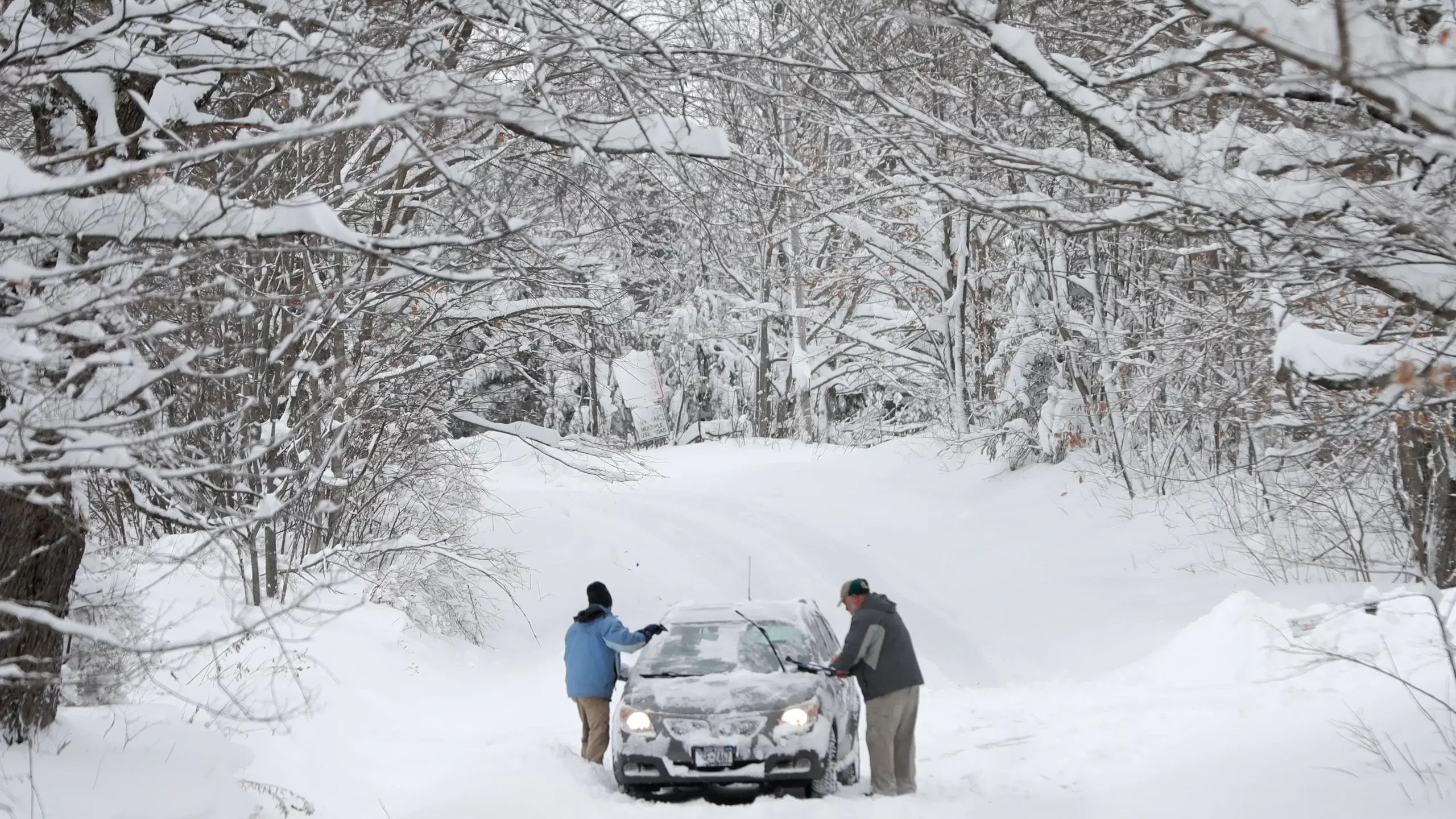World News
Lake-effect snowfall with the potential to drop up to 6 feet of snow is headed for western New York.
As “prolonged lake-effect snow” snarls around Buffalo, forecasters predict feet of snow in western New York.
Over the next two days, snowfall near Buffalo, New York, will be measured in feet rather than inches as a possibly historic lake-effect blizzard batters the western section of the state.
Serious warnings: The National Weather Service, which is generally rather reserved, called the impending storm “paralyzing.”
The weather agency predicts that travel will be challenging to impossible and urges people to prepare an emergency kit in their cars before leaving.

How to get ready: When the storm begins, officials advise staying off the highways and stocking up on food and water for the prolonged event, according to AccuWeather.
Winds are useless: A 35-mph wind gust will make the winter misery worse.
Lake-effect snow is anticipated during the next few days across western and upper Michigan, northern Indiana, northeast Ohio, and northwest Pennsylvania, in addition to western New York, according to Weather.com.
How does the changing climate affect you? Sign up for the Climate Point email every week.
How much snow can Buffalo expect?
While the weather agency predicted up to 4 feet of snow in certain regions, AccuWeather forecast a whopping 6 feet of snow, saying it was not out of the question.
According to AccuWeather meteorologist Matt Benz, “Buffalo and its southern suburbs may get as much as 3 to 6 feet of snow by Sunday,” adding that the greatest snowfall may occur during two intervals: Thursday night into Friday and Saturday night into Sunday night. During these two times, the worst weather conditions of this event are most likely to occur.
According to AccuWeather, snowfall may occur at a pace of up to 4 inches per hour. Forecasters cautioned that the storm might also bring thundersnow, which is a thunderstorm that generates snow instead of rain.
Lake Effect Snow Definition:
Here is how it takes place and how much snow it may produce:
What is thundersnow and how does it form? describing how snow may result after a thunderstorm
On Wednesday, the Buffalo region is under a Lake Effect Snow Warning from the weather service. It will be in force all weekend long.
The region contains Orchard Park, New York, the site of Sunday’s planned NFL game between the Buffalo Bills and Cleveland Browns.
What is the snow caused by lakes?
Lake-effect snow is caused by narrow bands of clouds that form when cold, dry northern air moves over a large, relatively moderate lake. These clouds might last just a few minutes or as long as several days.
According to the weather service, warmth and moisture are transmitted into the lowest part of the atmosphere when the cold air travels over the unfrozen and “warm” waters of the Great Lakes. The air rises, forming tight bands of clouds that generate two to three inches of snow each hour or perhaps more.
The lake water temperatures are still fairly warm compared to the middle to the end of winter, which makes these early-season episodes powerful, according to Benz. The Great Lakes’ water temperatures were typically in the 50s as of Tuesday morning. Air temperatures for the next several days will mostly be in the 20s and 30s, according to experts.
Winter weather: This week, a snowstorm with subzero temperatures is expected to affect nearly 20 states.

Previously, lake-effect snow storms in the Buffalo area caused chaos across the metropolitan area, shutting schools and roadways for days at a time. According to the Capital Weather Gang, 26 people died in a snowfall in November 2014, the majority of them from heart attacks they had while shoveling snow.
From Macallcloth




